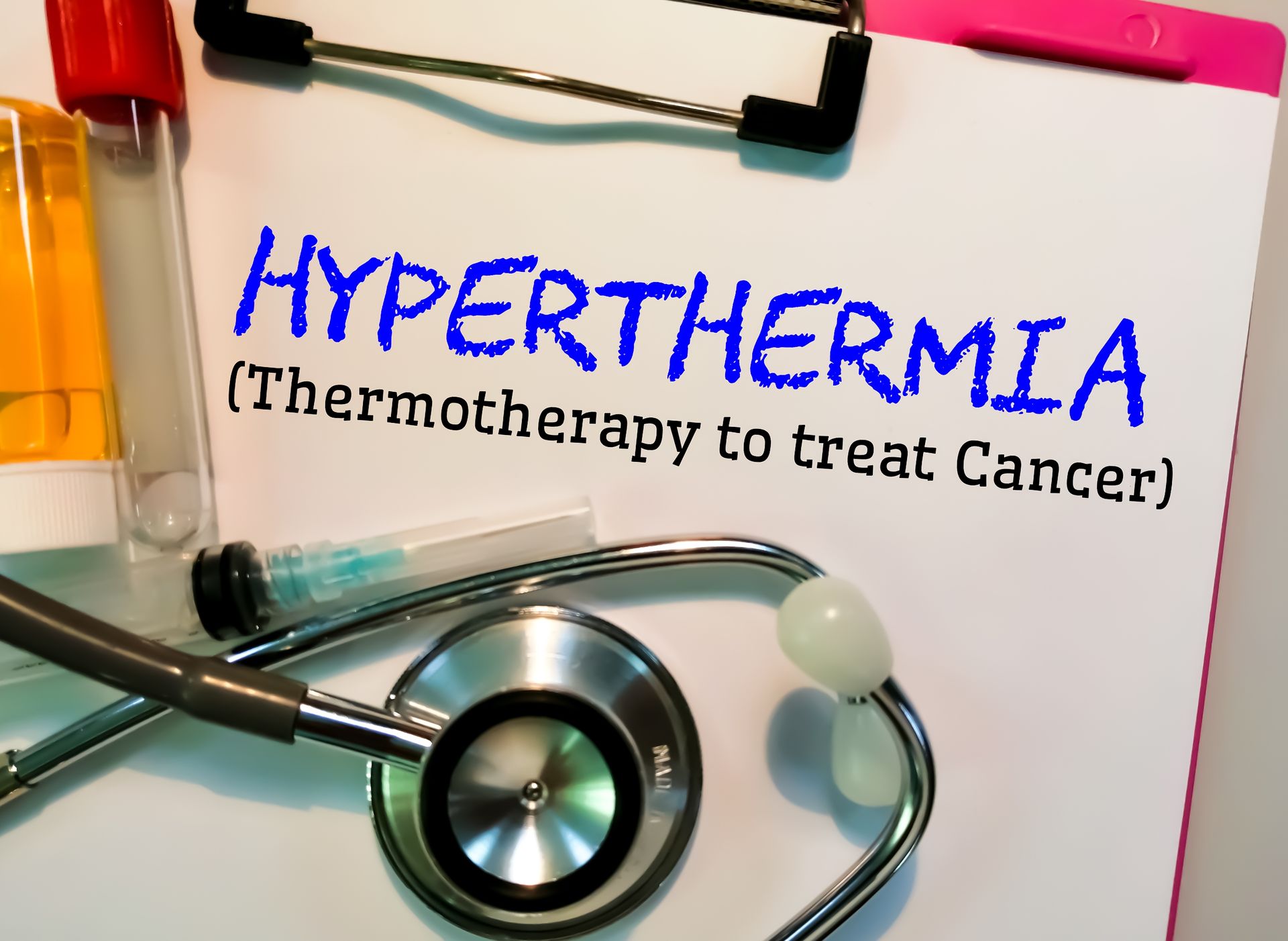Hyperthermia
WHAT IS HYPERTHERMIA?
"Give me the ability to cause a fever and I will cure any disease." - Parmenides, Greek physician, 500 BC
Hyperthermia is a therapeutic approach that uses heat to treat various illnesses, including cancer. The basic principle is based on increasing the temperature of the body or of a specific area of the body in order to stimulate the immune system and encourage the elimination of diseased cells. Hyperthermia falls into two main categories: local hyperthermia and Whole Body Hyperthermia (WBH).
LOCAL HYPERTHERMIA
Local hyperthermia focuses on a specific area of the body where a tumour is located. Using specialised medical equipment, the temperature of the tumour is raised to around 40-43 degrees Celsius. This increase in temperature can make cancer cells more sensitive to treatments such as chemotherapy, immunotherapy, radiotherapy or certain treatments practised here at home. Heat can also cause cancer cells to die (apoptosis).
TOTAL BODY HYPERTHERMIA (WBH)
Total body hyperthermia, on the other hand, aims to raise the temperature of the whole body. The body temperature is raised to feverish levels (up to around 40 degrees Celsius) for a set period of time. The aim is to mimic a natural fever, a known defence mechanism of the body against infection. In the context of cancer, this can stimulate the immune system to attack and eliminate cancer cells.

BENEFITS OF HYPERTHERMIA IN CANCER
Hyperthermia offers a number of advantages in the treatment of cancer:
- It increases the sensitivity of cancer cells to anti-cancer treatments, which can make these treatments more effective.
- It stimulates the immune system, helping the body to recognise and fight cancer cells.
- It can induce the death of cancer cells by increasing their temperature.
- It is generally well tolerated and can be safely combined with other anti-cancer therapies.
THERAPY PROCESS
Before starting a hyperthermia treatment, a detailed examination is carried out to assess the patient's state of health and determine the most appropriate type of treatment. Hyperthermia sessions can last between one and three hours, depending on the method used and the area of the body being treated. The frequency of sessions varies according to the patient's state of health and the type of cancer being treated.
Hyperthermia is a promising therapy for cancer, but it must always be administered under the supervision of a qualified healthcare professional and integrated into an overall cancer treatment plan.

